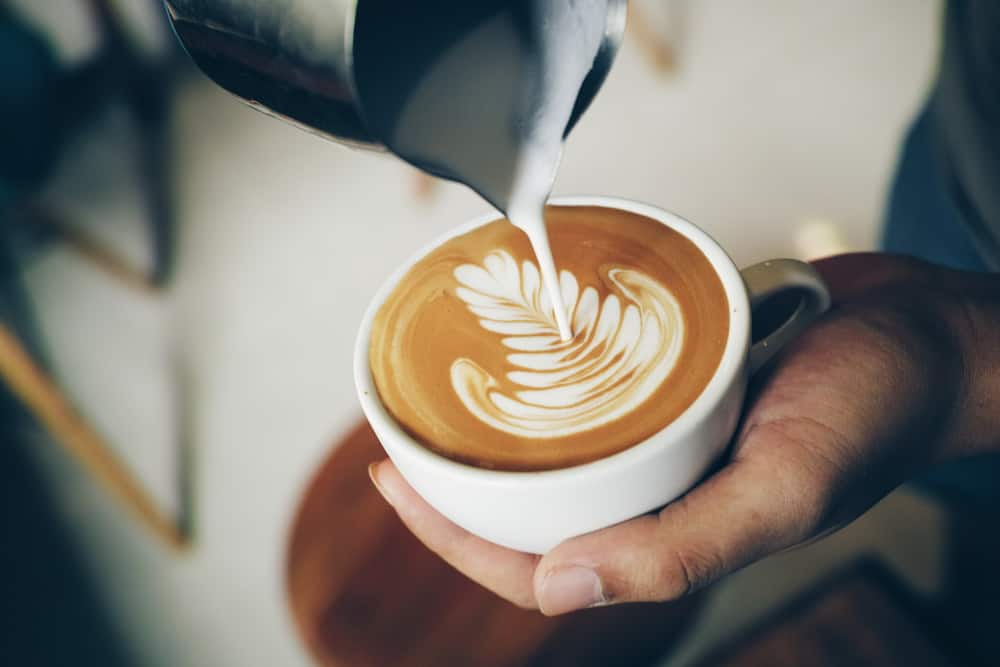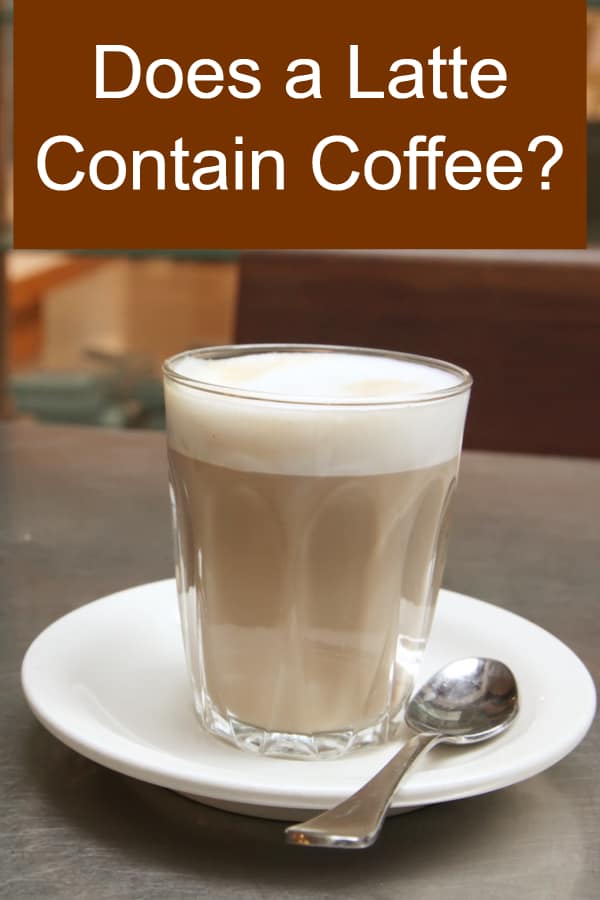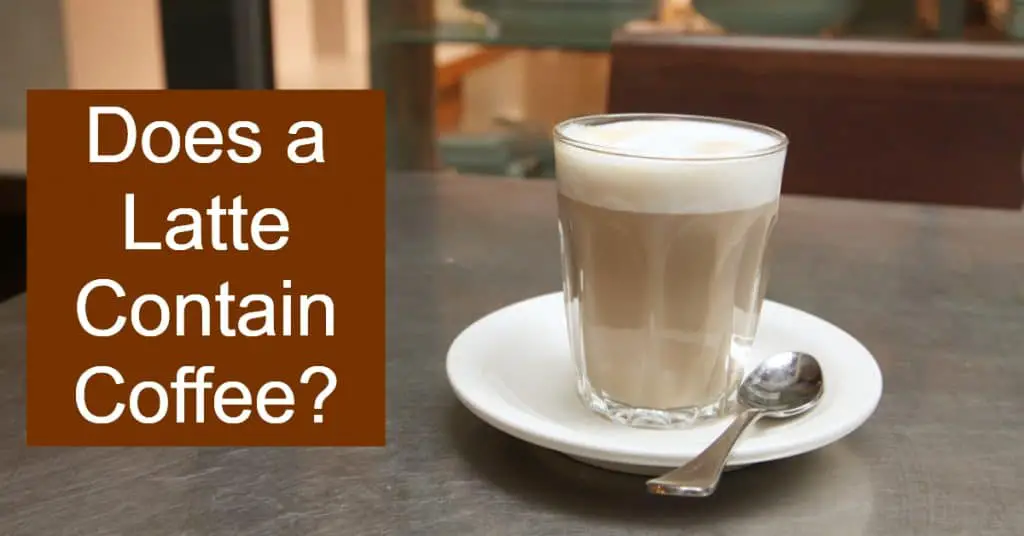There’s nothing better than a warm cup of coffee in the morning to get your day going, in the middle of the afternoon as a mid-day pick-me-up, or even after an early dinner to help you digest a hearty meal. Coffee, as they say, soothes the soul.
Whether you like it black or light and sweet, there’s no denying that you love coffee. However, if you’re looking to trade your traditional cup o’ jo with something that has a different flavor and consistency, you might be thinking about giving a latte a try.
But if you’ve never had a latte before, there’s no doubt you have some questions about this rich, frothy, and warm beverage that is beloved among coffee drinkers around the globe.
- What does it contain?
- How do you make it?
- Do you need to have coffee to make a latte?
- What about the famed “chai latte”?
- Is a latte stronger than traditional coffee?
To find the answers to these questions and more, keep on reading.
What Does a Latte Contain?
The formal name of a latte – “café latte” – pretty much explains what this beverage contains. Essentially, it’s just coffee mixed with milk. However, what makes it distinct from a traditional cup o’ joe is that the milk used in a latte is steamed and has a layer of foam.
In a lot of ways, a latte is quite similar to a cappuccino; however, the steamed milk content is usually greater, and less milk foam is used, while a cappuccino is comprised of more milk foam and less steamed milk. Another coffee beverage that is similar to a café latte is the macchiato, which contains foamed milk only; there is no steamed milk.
A cup of café latte begins with a shot of espresso. Steamed milk is then poured on top of the espresso, and then milk foam tops the beverage off. If you go to a café, a barista may pour the milk foam in a decorative way to create a pretty pattern that just adds to the appeal of the beverage. The secret to a café latte’s deliciousness is the milk, which is so creamy and just simply a delight to the taste buds. It also creates a smooth feeling over your taste buds that are just so completely satisfying.
In the latter part of the 20th century, the latte gained popularity during the 80s and 90s. It quickly became one of the most frequently ordered beverages at cafes, coffee houses, and restaurants around the globe. The basic recipe for the beverage has remained pretty much untouched since that time. A few new flavors have been added to the mix, such as cinnamon and vanilla. A wide array of syrups have also been introduced. These additions have only further enhanced the taste (and the popularity) of the beverage.
Café lattes can be made with whole milk, 2 percent milk, 1 percent milk, or even fat-free milk. Over the past few decades, the increased use of non-dairy milk, such as almond, coconut, and soy, has led latte drinkers to replace dairy milk in their lattes. Many all the lattes that are ordered at coffee houses around the globe are made with soy milk.

Can You Make a Café Latte with Coffee and Milk?
To make a café latte, you would need to replace your traditional drip, French press, or whatever other types of coffee you would normally drink with espresso. So, to make your café latte, you could get an espresso machine, or you could brew a super-strong cup of coffee.
However, what would be even better than an extra-strong cup of coffee is using a Moka pot or an Aeropress to make your coffee for a café latte. These devices are similar to an espresso machine as they both use pressure to brew the coffee. Of the two, for the most authentic experience, opt for a Moka pot over an Aeropress. The latter would undoubtedly work (though it won’t be as similar to a traditional café latte that is made with espresso).
Whichever method you choose, once you’ve brewed your strong coffee, pour two ounces into an eight-ounce latte cup. Then you’ll need to add in the frothed milk. If you have a steam or pump espresso machine, you can use the machine to froth your milk or even half-and-half if you prefer; however, if you don’t, you could pour about six ounces of cold milk into a mason jar, tightly seal the lid onto the jar, and then vigorously shake the jar until the milk is frothy. Remove the lid from the jar, set it in a microwave, and warm it up for 30 seconds.
Lastly, pour the frothed warm milk onto the top of your coffee and enjoy!
Is There a Latte Without Coffee?
Sure, you could technically make a latte without coffee; however, considering the fact that the beverage is made of just two ingredients and one of those ingredients is coffee, if you make a café latte without coffee, then you’ll simply be drinking milk. The milk will be warmed and frothed, which makes it a bit more like a café latte; however, a latte without coffee really is just a cup of milk.
Does a Chai Latte Have Coffee In It?
There are lots of different types of lattes, and one of the most popular variations is the chai latte. This rendition is made with black tea, spices, and milk.
In other words, like a traditional café latte, a chai latte contains frothed milk. However, this version replaces coffee with black tea.
The spices used in a chai latte vary. One of the most common is ginger, which provides a touch of warmth and sweetness. Another common spice is cinnamon, which further enhances the warmth and adds a touch of spiciness. Lastly, there is cardamom, which lends a unique taste.
When combined, the black tea, the spices, and the frothed milk make for a real taste sensation. A chai latte does tickle the taste buds and is oh-so-satisfying.

Is A Latte Stronger Than Coffee?
This is a common question. Since a café latte is usually made with espresso, many people assume that espresso contains more caffeine than a traditional cup of coffee and that the taste is stronger in an espresso vs regular coffee.
The answer to that question is this: it depends.
Why? It depends on a few different factors.
- on the type of coffee used in the beverage
- how long the espresso or coffee is brewed
- what type of beans are used to make the espresso or coffee
Another factor that will impact the strength of an espresso is the amount of milk that is used. Just like a cup of regular coffee, the more milk you add to a café late, the less strong it will be, and the less milk you use in the beverage, the stronger it will be.
Regarding the caffeine content, essentially, a café latte and a cup of standard coffee have about the same content. On average, a café latte has about 75 mg to 90 mg of caffeine per shot, and lattes are usually made with 1 or 2 shots of espresso. This would equal between 150 and 180 mg of caffeine in a large café latte.
A standard drip cup of coffee has about 120 mg of caffeine per 12 oz cup. The amount varies on the coffee beans used and the size of the cup. If you have a smaller cup of coffee, the caffeine content will be less, and if you have a larger cup of coffee, the caffeine content will be more.
Summing It Up
If you’re looking for a delicious alternative to your standard cup of coffee, try a café latte! It’s a warm, creamy, and simply delightful beverage that will be sure to delight your taste buds.


